FreshmanNewbie
Advanced Member level 1
I am trying to implement an H-bridge with the MIC5021 for the high side of both legs and an MIC5020 for the low side of both legs.
I have used the MIC5020 in other designs and it seems to be working great. This is the first time I have used the MIC5021 and I am not getting the boost voltage needed to fully turn on the high side MOSFET.
When the train of pulses starts, I see one large pulse at close to the correct voltage and over the next few pulses (3-4) it diminishes to system voltage (in this case 24 V). Initially I had a 0.1 μF capacitor which I later realized was way too big and possibly damaging the MIC5021. I downsized this to 0.01 μF and I still am seeing similar results. I have ordered 2.7 nF capacitors to try next and I am currently waiting for them to arrive.
In the datasheet for the MIC5021 I see the boost capacitor tied to system voltage in one diagram and the source of the MOSFET being driven in another. Which diagram is correct/better? Is there an advantage of one configuration over the other? Ultimately I need to get the boost capacitor generating the proper voltage to drive the MOSFET fully ON as it is not doing it right now. What can I do to address this?
In the attached image the system voltage is 24 V. Here are the signals:
Yellow: High-side signal from controller
Blue: Low-side signal from controller
Red: @ Low-side gate
Green: @ High-side gate

I have used the MIC5020 in other designs and it seems to be working great. This is the first time I have used the MIC5021 and I am not getting the boost voltage needed to fully turn on the high side MOSFET.
When the train of pulses starts, I see one large pulse at close to the correct voltage and over the next few pulses (3-4) it diminishes to system voltage (in this case 24 V). Initially I had a 0.1 μF capacitor which I later realized was way too big and possibly damaging the MIC5021. I downsized this to 0.01 μF and I still am seeing similar results. I have ordered 2.7 nF capacitors to try next and I am currently waiting for them to arrive.
In the datasheet for the MIC5021 I see the boost capacitor tied to system voltage in one diagram and the source of the MOSFET being driven in another. Which diagram is correct/better? Is there an advantage of one configuration over the other? Ultimately I need to get the boost capacitor generating the proper voltage to drive the MOSFET fully ON as it is not doing it right now. What can I do to address this?
In the attached image the system voltage is 24 V. Here are the signals:
Yellow: High-side signal from controller
Blue: Low-side signal from controller
Red: @ Low-side gate
Green: @ High-side gate
